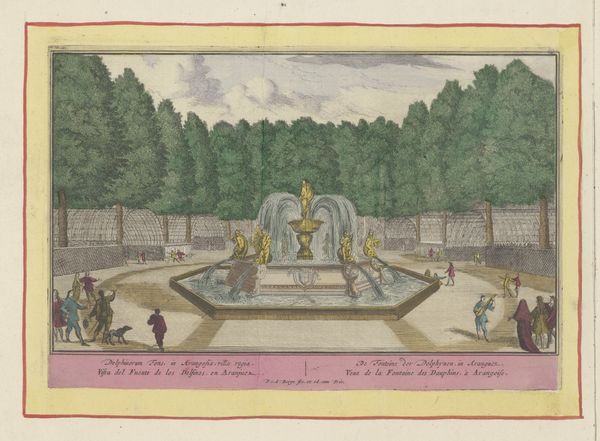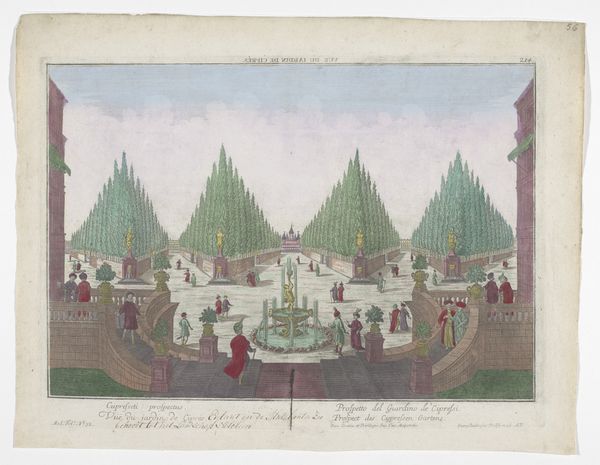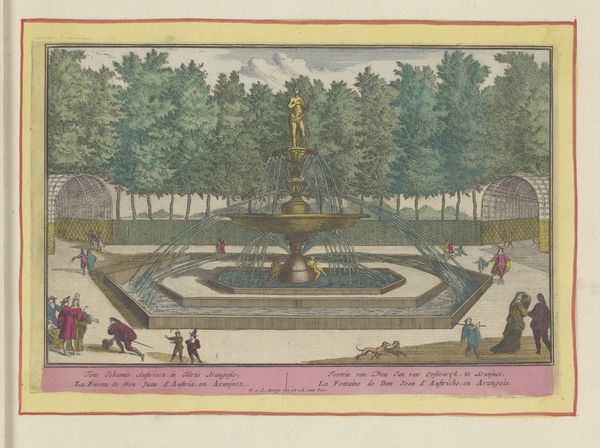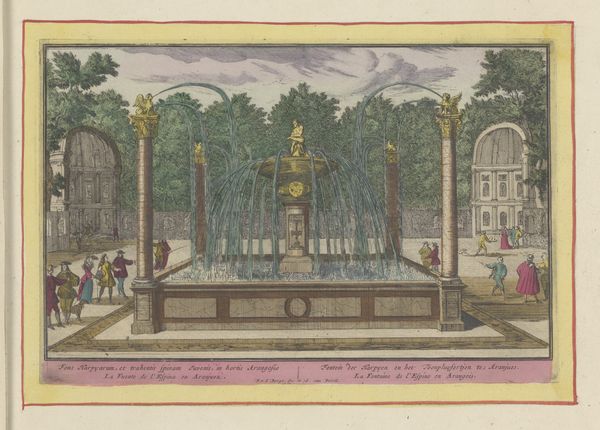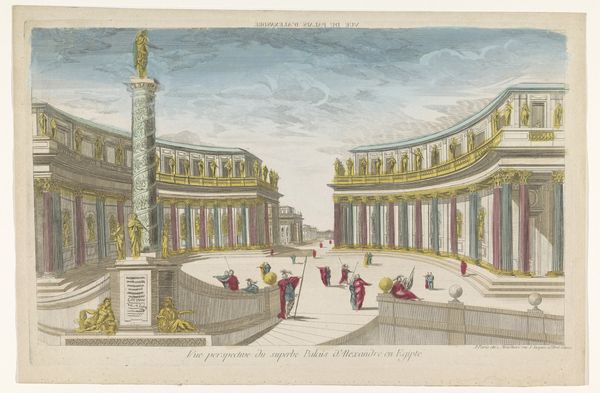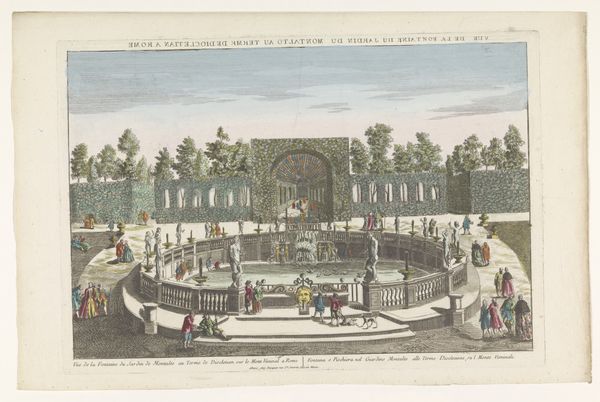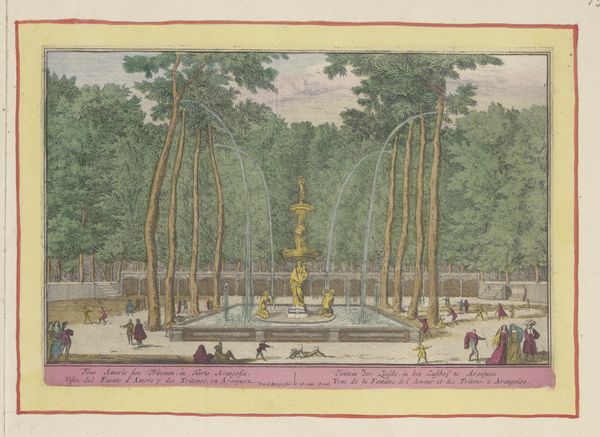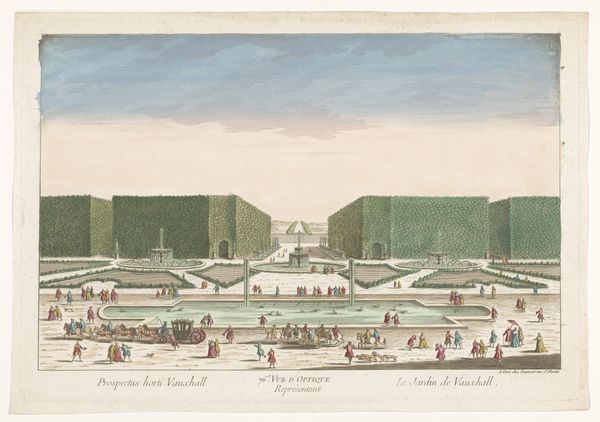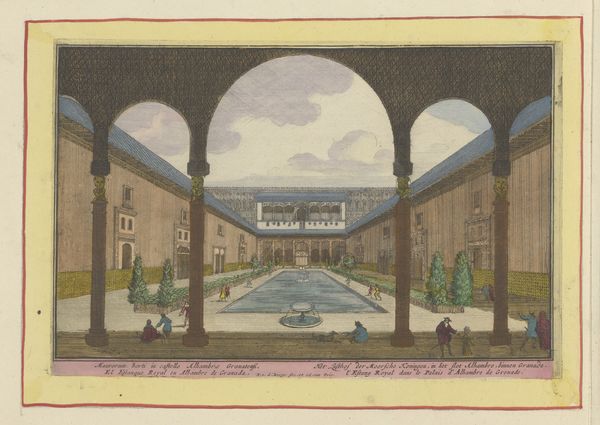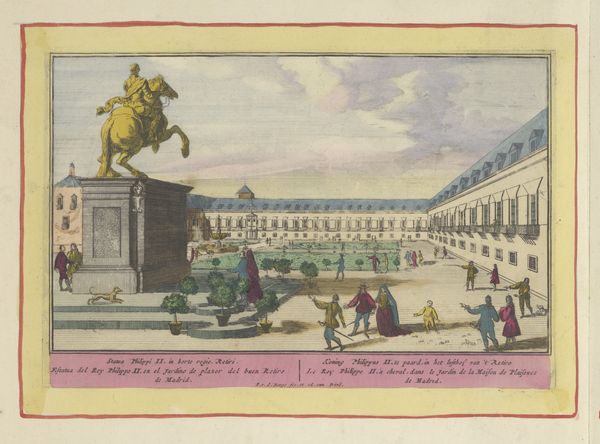
Kerk van Paulus de Heremiet in de tuinen van het Palacio del Buen Retiro te Madrid 1694 - 1737
0:00
0:00
pietervandenberge
Rijksmuseum
drawing, coloured-pencil, print, etching, paper, ink
#
drawing
#
coloured-pencil
#
baroque
# print
#
etching
#
landscape
#
paper
#
ink
#
coloured pencil
#
history-painting
#
watercolor
Dimensions: height 169 mm, width 258 mm
Copyright: Rijks Museum: Open Domain
Curator: This detailed drawing by Pieter van den Berge depicts the Kerk van Paulus de Heremiet within the gardens of the Palacio del Buen Retiro in Madrid, dating sometime between 1694 and 1737. It's an etching with ink and coloured pencil on paper. Editor: It’s remarkably balanced, isn't it? Almost symmetrical, with the hermitage centered. The artist’s skillful rendering of perspective really draws you into the scene despite the limited use of color. Curator: Indeed. Van den Berge's rendering allows us to examine the intersection of piety and royal display. The Buen Retiro palace gardens, commissioned by Philip IV, were intended as a theater for power, with structures like this hermitage serving as spaces for both spiritual reflection and aristocratic leisure. Editor: And the carefully positioned figures animate the courtyard, adding scale and social context. The etching emphasizes formal relationships between structures, like the strong verticals of the fountain or repeated arches. This ordered, rational approach lends a sense of harmony. Curator: Consider, too, how this print functioned as a form of visual propaganda. Circulated among the European elite, it presented the Spanish monarchy as patrons of both the arts and religion, reinforcing their legitimacy through carefully crafted imagery. The baroque style contributes to an aesthetic that subtly reinforces power. Editor: Yet, there's also a hint of artificiality. The highly structured landscape, the formal arrangement of elements—it all suggests control, not a natural scene, and not what I would call an authentic devotion, or pious solitude. The scene is populated; therefore, devoid of hermetic seclusion, no? Curator: A critical point. It's a performance of piety, staged within the theater of the court. And those formal devices – the symmetry, the carefully placed figures – all underscore that controlled, curated image. Editor: Studying this reminds us how appearances can be deceiving, while delving into artmaking can reveal nuanced intentions and power dynamics. Curator: Precisely. And seeing how these factors are woven into the artwork enhances not only our viewing experience, but also provides insights to a pivotal time in Spanish history.
Comments
No comments
Be the first to comment and join the conversation on the ultimate creative platform.
